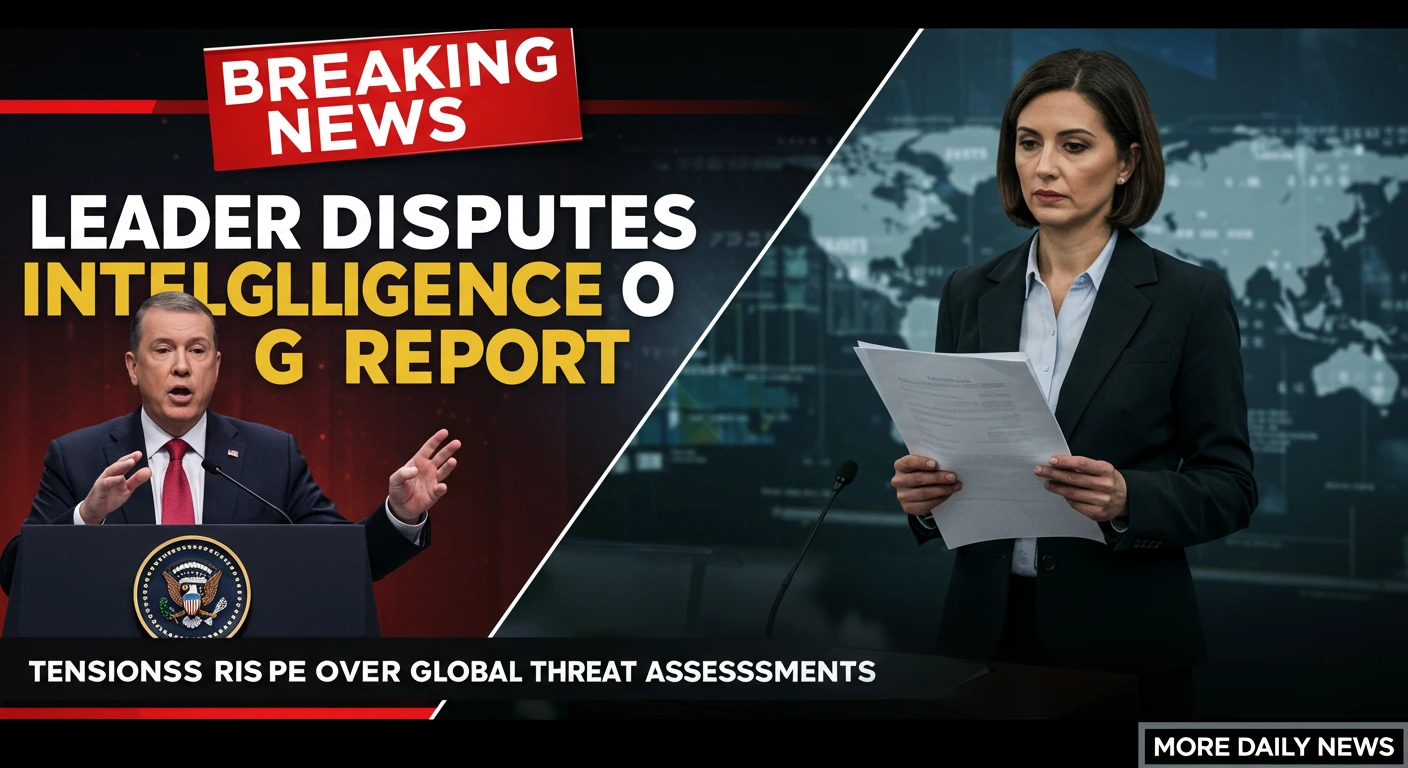Table of Contents
President Donald Trump publicly repudiated his Director of National Intelligence Tulsi Gabbard’s assessment of Iran’s nuclear program during an inflight press conference aboard Air Force One on June 17, 2025. The unprecedented second-term rift occurred as Trump returned early from the G7 summit amid escalating Israel-Iran hostilities. Trump dismissed Gabbard’s March 2025 congressional testimony that Iran was not actively building nuclear weapons, declaring: “I don’t care what she said. I think they were very close to having one.” The confrontation signals renewed tensions between the White House and intelligence agencies despite Trump’s appointment of loyalists to key positions. When asked by reporters how close Iran was to developing a nuclear weapon, Trump responded: “Very close.” Confronted with Gabbard’s sworn testimony that U.S. intelligence agencies “continue to assess that Iran is not building a nuclear weapon,” Trump snapped: “I don’t care what she said.” This public dismissal of his intelligence chief—a former Democrat who left the party to endorse Trump—occurred hours after Trump cut short his participation at the G7 summit in Canada to address the Middle East crisis. His remarks aligned with Israeli Prime Minister Benjamin Netanyahu’s justification for ongoing airstrikes against Iranian nuclear facilities. Gabbard’s March 2025 testimony to Congress stated unequivocally that Iran had not restarted its nuclear weapons program: “The intelligence community continues to assess that Iran is not building a nuclear weapon and Supreme Leader Khamenei has not authorized the nuclear weapons program he suspended in 2003.” This assessment matched November 2024 findings under the Biden administration and was corroborated by Senator Mark Warner, who confirmed no new intelligence contradicted Gabbard’s position. Administration officials scrambled to reconcile the discrepancy, arguing Iran’s uranium enrichment to 60% purity—its highest level ever—provided breakout capacity. A senior official anonymously noted Iran was “as close as it can be without having one,” while General Erik Kurilla testified Iran could produce fissile material for 10 bombs within three weeks. The International Atomic Energy Agency confirmed Iran possesses sufficient enriched uranium for multiple weapons but maintains its program is peaceful. Trump’s rejection of Gabbard’s assessment echoes first-term clashes with intelligence agencies, most notably when he sided with Vladimir Putin over U.S. intelligence regarding Russian election interference in 2018. The current rift is particularly striking given Gabbard’s status as a Trump loyalist who has echoed his “deep state” criticisms. Her narrow Senate confirmation faced scrutiny over limited intelligence experience. Parallels emerged with the Iraq War intelligence controversy, where the 2003 invasion proceeded despite contradictory evidence. National security experts voiced concerns about cherry-picking intelligence to justify military action against Iran. The tension escalated when Gabbard fired two intelligence officers who authored a report contradicting Trump’s justification for deporting Venezuelan migrants. Trump’s alignment with Netanyahu’s position strengthens Israel’s justification for ongoing strikes against Iranian nuclear facilities, including the June 16 attack on Iran’s state-run television building in Tehran. When asked about pursuing a ceasefire, Trump demanded a “real end” rather than temporary pause, hinting at complete Iranian nuclear disarmament. He revealed potential diplomatic channels, suggesting he might dispatch Vice President JD Vance and special envoy Steve Witkoff for talks with Iranian officials. Military analysts note Israel’s strikes have damaged above-ground facilities but failed to destroy the fortified Fordo enrichment site buried 90 meters underground. Experts confirm only U.S.-owned 30,000-pound GBU-57 “bunker buster” bombs delivered by B-2 stealth bombers could penetrate Fordo—capabilities Israel lacks. This technical reality positions the U.S. as potentially indispensable for neutralizing Iran’s most secure nuclear assets. Trump’s public dismissal of intelligence consensus on Iran’s nuclear program reveals enduring tensions between the White House and spy agencies, even when led by political allies. The contradiction carries significant implications for Middle East escalation, as it validates Netanyahu’s preemptive strike doctrine against Iranian facilities. With Tehran possessing unprecedented uranium stockpiles and Fordo remaining operational, the intelligence-policy divide threatens to complicate diplomatic offramps while increasing pressure for direct U.S. military action. As the administration debates bunker-buster deployment, this episode underscores how intelligence assessments become geopolitical tools in high-stakes nuclear standoffs. In March 2025 testimony, Gabbard stated: “The intelligence community continues to assess that Iran is not building a nuclear weapon and Supreme Leader Khamenei has not authorized the nuclear weapons program he suspended in 2003.” Aboard Air Force One on June 17, Trump declared: “I don’t care what she said. I think they were very close to having one,” directly contradicting his intelligence chief. No. All assessments agree Iran hasn’t weaponized its program, though it enriches uranium to 60% purity and maintains stockpiles sufficient for several bombs if weaponized. Trump’s position supports Israel’s justification for strikes against Iran and increases pressure for U.S. military action, particularly against fortified sites like Fordo requiring specialized U.S. weaponry. Yes, notably in 2018 when he sided with Vladimir Putin over U.S. intelligence regarding Russian election interference.
The Air Force One Confrontation
Contradicting the Intelligence Consensus

Historical Pattern of Intelligence Disputes
Nuclear Capability Timeline
Date Assessment Source March 2025 “Iran is not building a nuclear weapon” DNI Gabbard congressional testimony June 2025 “Very close to having a nuclear weapon” President Trump aboard Air Force One May 2025 Iran could produce fissile material for 10 bombs in 3 weeks Gen. Erik Kurilla (CENTCOM) November 2024 “Iran is not building a nuclear weapon” Biden-era intelligence report 2023 IAEA detects uranium enriched to 83.7% purity International Atomic Energy Agency Diplomatic and Military Implications
Conclusion
Frequently Asked Questions
What exactly did Tulsi Gabbard say about Iran’s nuclear program?
How did Trump respond to Gabbard’s assessment?
Has Iran actually developed nuclear weapons?
Why does this dispute matter strategically?
Has Trump contradicted intelligence agencies before?

